Categories
Latest Updates
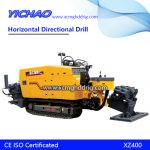
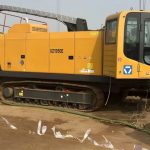
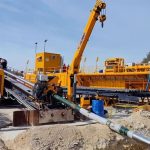
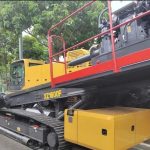
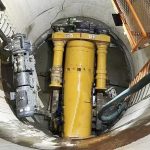
The unilateral directional drilling inclined well crossing makes full use of the small size, short drill pipe, flexible operation, and easy direction control of small directional drilling rigs. The unilateral directional drilling inclined well crossing technology is the use of horizontal directional directional drilling technology to form inclined wells. It is a combination of horizontal directional drilling crossing and inclined well crossing technology. The advantages of the two technologies are taken, and the parameters of the two technologies are combined. and device controllability. The unilateral directional drilling inclined well has a large range of slope, the difficulty of slope control is small, the amount of mud in the crossing construction is small, the impact on the environment is small, and the construction safety is good, and it is suitable for a single long-distance inclined well crossing. The main parameters of the unilateral directional drilling inclined well crossing technology are the entry angle, the excavation angle (only when the line trajectory is selected as a curve), the buried depth of the pipeline, and the crossing length.
According to the “Code for Design of Crossing Engineering of Oil and Gas Transmission Pipelines”, “the entry angle of the horizontal directional drilling and laying of the crossing pipe section should be 6°~20°, and the excavation angle should be 4°~12°. , The buried depth of the pipe section and the elastic laying conditions are determined.” The slope of the inclined shaft for artificial excavation inclined shaft construction is generally not more than 35°, and the construction length is not more than 60m; the safety of the operation in the artificial shaft is poor, and the direction control is difficult, these shortcomings limit the artificial opening of the shaft. The scope of use for digging inclined wells to cross. Based on the angle and length limitations of the above two technologies, the parameter selection of the unilateral directional drilling deviated well crossing technology is studied.
Under normal circumstances, the drilling rig can be directly parked on the natural floor, and the angle of the inclined well can be met by adjusting the angle of the drilling rig itself. Consistent dustpan-shaped working pit, the drilling rig is parked next to the working pit, and then the installation and debugging of the drilling rig are carried out according to the terrain and the designed drilling angle to ensure that the center line of the drill pipe is concentric with the inclined shaft crossing axis and the soil penetration angle is guaranteed. Check the direction control system program to ensure that the accuracy of the magnetic azimuth angle measured by the probe on the ground meets the requirements.
The pipeline is laid on the flat section of the loess plateau and the valley by excavating the trench and burying the pipe. The burial depth is the process line burial depth on the plateau top, and the burial depth is appropriately increased in the valley considering scouring. Dig a pipe trench in the valley to the bottom of the steep slope and then dig a hole into the steep slope with a depth of about 2-3m. The entry points on both sides of the gully and the unearthed points at the bottom of the gully should be kept in the same vertical plane, and the deviation of the unearthed points should be controlled within 10cm to ensure that the elbow joints at the bottom of the ditch are natural and smooth. Therefore, it is necessary to improve the accuracy of the measurement and payout, and at the same time strictly control the drilling direction.
In order to ensure the safety of crossing construction, the distribution range of loose soil and stabilized soil at the edge of loess gullies should be identified before construction. The safe distance between the directional drilling rig and the slope side should be more than 10m, and the safe distance between the pipeline crossing path and the stable layer on the slope side should be more than 3m.
According to the topography and topography of the crossing, the stability of the loess layer, etc., the drilling rig’s entry angle is determined. In order to reduce the length of directional drilling as much as possible, that is, to shorten the distance from the entry point to the depth of not less than 6.0m below the scouring depth of the gully bottom, it is hoped that the drilling rig will have a larger entry angle. Based on this consideration, the slope terrain is used to install the control of the soil entry angle that the directional drilling rig actually traverses.
Generally, when the line trajectory is a straight line, the angle is relatively large. The soil entry angle of the research line should meet the curve entry angle, and the excavation angle and buried depth can be within the specification range. The penetration angle of the crossing can be enlarged as much as possible by the artificial slope method. The relationship between the entry angle α and the crossing length L is as follows:
According to the above formula: the larger the soil entry angle is, the smaller the safe distance between the slope top entry point and the gully slope top, the shorter the length of crossing the inclined shaft, the greater the pulling force of the excavator is required for the sliding pipeline, and the smaller the angle is, it is not conducive to the main pipeline. The transmission of the pipeline, the weight of the pipeline is not fully utilized, and the friction between the pipeline and the soil is increased.
Assuming that the height difference between the entry point and the excavation point (H+h-h0) is taken as the fixed value H0, the value of the crossing length L of different entry angles of the same height difference site is obtained. L=H0/sinα, (α=6°~45°), its curve is shown in Figure 4.
①In the range of angle less than 6° (that is, the AB green dotted line segment), the theoretical crossing length is greatly affected by the angle. The Code for Design of Crossing Engineering stipulates that “the entry angle of the horizontal directional drilling and laying of the crossing pipe section should be in the range of 6° to 20°”.
②The angle range is in the range of 6° to 20° (that is, the BC purple-red solid line segment) is affected by the angle and changes greatly. Desirable, but this section of crossing is not economical and reasonable.
③The angle range is in the range of 20°~45° (that is, the red solid line segment of CD), and the change of the crossing length is less affected by the angle. The larger the angle, the shorter the length. 2.9H0 The curvature change of this section is much smaller than that of the BC section, but the angle range exceeds the range specified in the specification “Code for the Design of Oil and Gas Transmission Pipeline Crossing Engineering” that “the entry angle of the horizontal directional drilling and laying crossing pipe section should be 6°~20°”, but By adjusting the drilling rig and the pit adjustment, the superposition angle (the drilling rig itself can be adjusted to a maximum of 20°, and the pit equipment can be adjusted to a maximum of 25° according to the equipment permit) can be adjusted to a maximum of 45°, so the soil entry angle is also within the scope of application, which is actually desirable. The section crossing is economically reasonable.
④The angle range is in the range of 45°~90° (that is, the DE blue dotted line segment), and the crossing length is less affected by the angle. Practically not advisable.
The horizontal angle α between the line AE between the entry point and the unearthed point and the top of the slope is to use the slope terrain to install the directional drilling rig, that is, the drilling rig base floor and the straight line AE are in the same plane, assuming that the AE plane is rotated horizontally by the angle α, The horizontal directional drilling curve is made on the basis of the plane AE. It is assumed that the horizontal directional drilling angle is β and the excavation angle is β. Take the fixed range of 6 to 20°, β is the assumed horizontal directional drilling excavation angle, and the value is set to 4 to 12° according to the specification. The final entry angle of the unilateral directional drilling inclined well crossing is α+β, which ranges from 6 to 45°, and the excavation angle is α+β, which ranges from 4 to 37°.
According to the curve trajectory crossing length formula:
According to the formula, the value range of the entry angle is 6-45°, and the excavation angle is 4-37°. The larger the β, the longer the crossing length; the smaller the β, the shorter the crossing length; The smaller the α, the larger the crossing length is.
The relationship between the crossing length and the entry angle of the curved trajectory after the superposition of the entry angle and the unearthed angle is the same as that of the straight trajectory, but the value is different, and the principle is basically the same.
From the working principle, site conditions, the research on the selection of the trajectories of the crossing line and main parameters, and the economic comparison of the unilateral directional drilling technology, it is concluded that the unilateral directional drilling is different from the horizontal directional drilling, and it is different from the artificial deviated well. traversal technology. It uses horizontal directional drilling technology to form holes and reaming holes, and uses artificial inclined well technology to send pipelines into the inclined well. The different trajectories and the different parameters are compared. The specific content is shown in Table 1.
The larger the entry angle is, the distance between the entry point and the edge of the gully cannot be guaranteed. The range of the entry angle of the horizontal directional drilling specification (6°~20°) and the adjustable angle range of the drilling rig itself and the floor (0°~25°), The allowable angle range of the drilling rig itself and the drilling rig’s pit shall not exceed 45° after superimposition. Referring to the angle range of artificial inclined well technology (10°~35°), it is finally determined to set up directional drilling along the direction of the pipeline at the top of the plateau, and control the drilling angle of the drill pipe to be 6°~45° (depending on the ability of the drilling rig to be installed and fixed as much as possible). Increase the angle to reduce the length of the inclined well), but the 20°~45° entry angle is the most economical and reasonable. For the curve trajectory, the excavation angle is controlled at 4°~37°, and the buried depth of the pipeline meets the requirements of horizontal directional drilling and artificial inclined wells. It is required that the bullseye is aligned with the opening of the slope angle, and then the drilling rig is reinforced.
